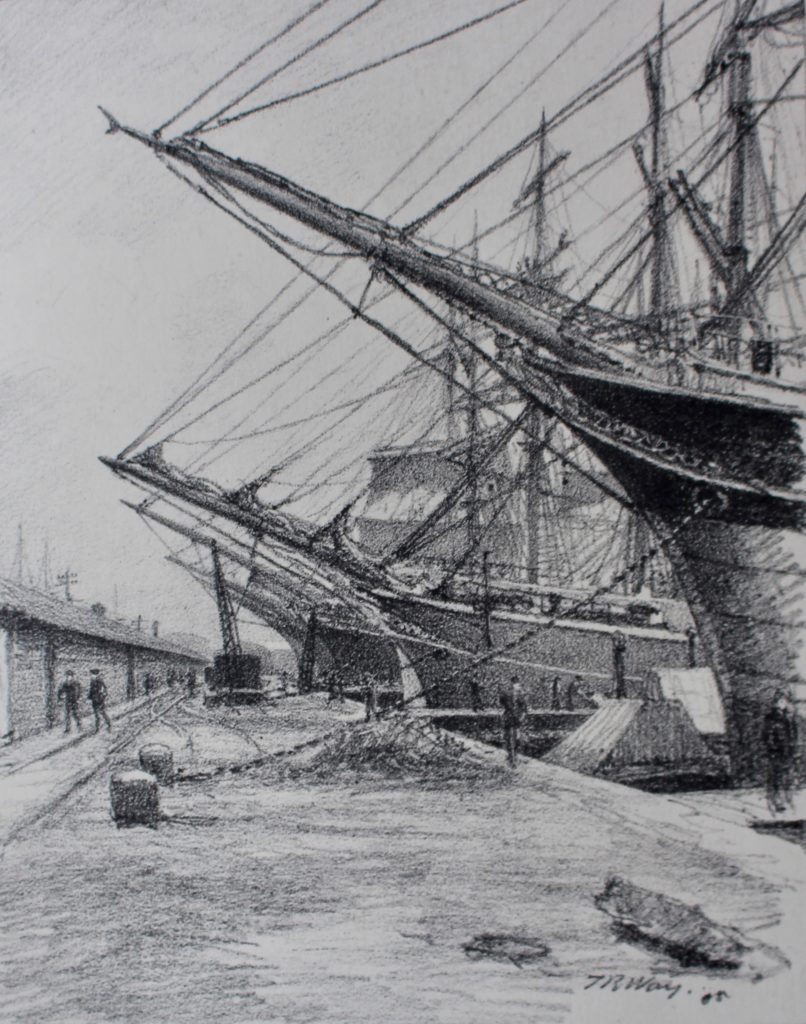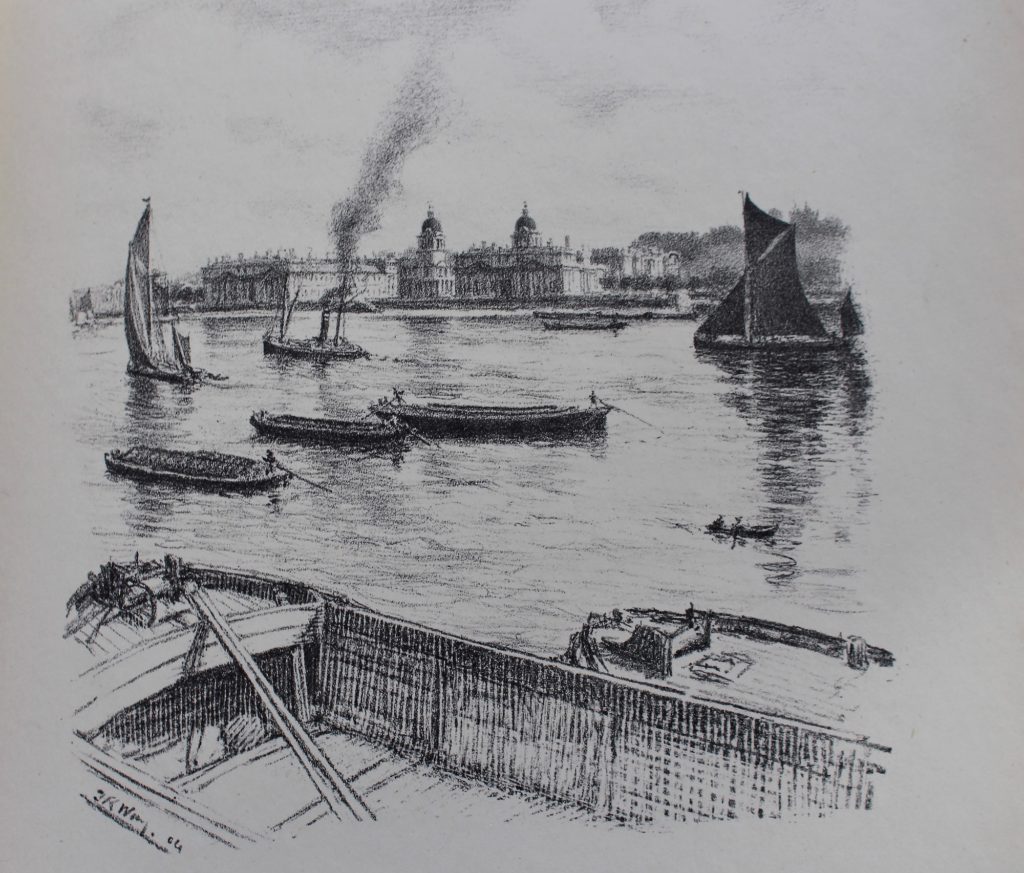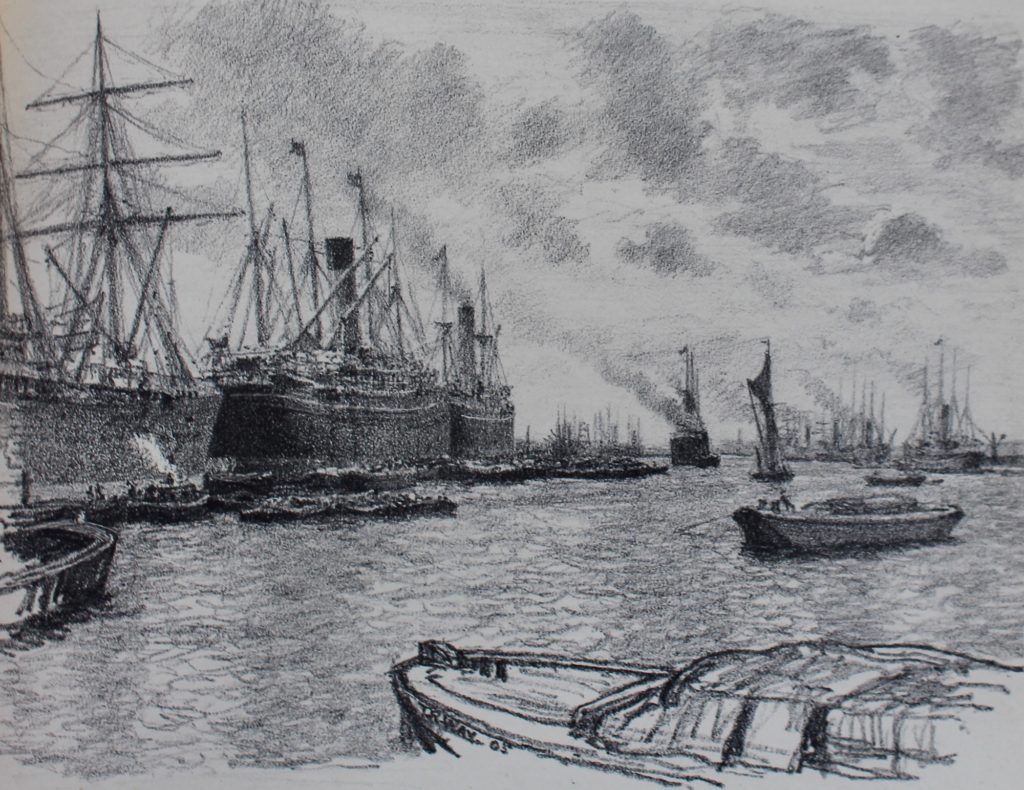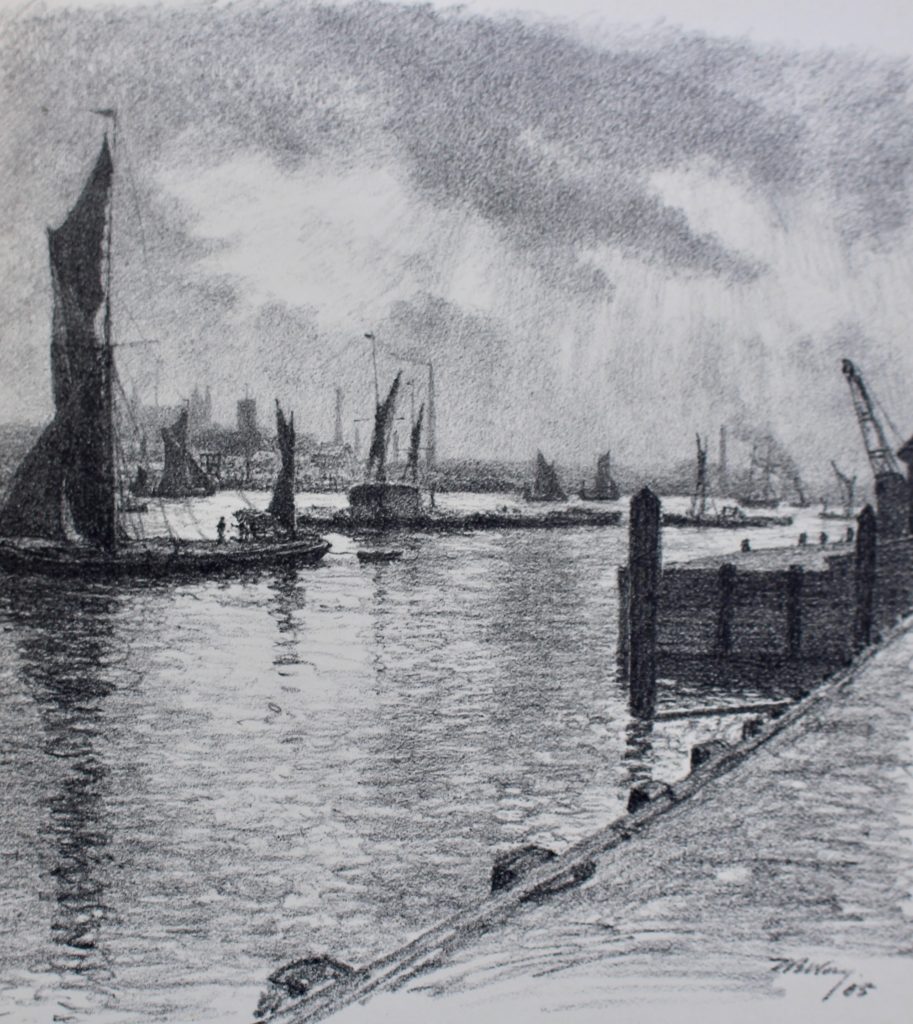Continuing our 1907 journey downstream with T. R. Way
With no end in sight to the tragedy of the Covid-19 virus and its terrible toll, it has been a pleasurable distraction to continue our journey towards the sea in the slipstream of artist T. R. Way and in the company of Waterman and Lighterman, Eric Carpenter.
After studying the sketch above, Eric believes the view to be from “Pageant Stairs”, Rotherhithe, “stairs that Watermen would use to ply their trade”. With his long time familiarity with the Thames and his deep-rooted knowledge of its powers and peculiarities, he can tell that here “the tide is ebbing as the vessels are making their way downstream and the boatmen are approaching the barges head upon tide”.

Sailing ships traditionally present in the Port of London were gradually overtaken by steamships as vessels of choice and, according to a History of the Port of London pre 1908, by 1875 “steam represented 5.1 million tons and sail only 3.6 million tons.”

Eric suggests that the artist was “positioned in the Island Gardens on the Isle of Dogs, Millwall.” He notices that “the vessels are proceeding downstream so that one can assume that the tide is ebbing.” Then he adds a detail that only a Waterman with intricate knowledge of the river can know: “The artist is once again applying his artistic licence: he has drawn the barges too close to the north shore.” He explains: “The tide sets at Greenwich towards the bend of the river on the south shore, so the tide, wanting to go in a straight line, strikes the outer curve. The barges would therefore be midstream to use the flowing tide more.”
Eric has lived and experienced this, and says that “with regard to a ‘drive’, a journey under oars, the object is to get from A to B with minimal effort.” This is quite unlike the strains of rowing a barge in a race. “The aim here (as in the picture) would be to use the tidal flow to the maximum advantage, positioning the barge as much as possible in the fastest flow so making the trip manageable using only one oar.”

You’ll notice that some of the ships in the Royal Albert Dock seem to be a form of hybrid vessel and at the time that T.R. Way and W.G. Bell collaborated on their book, the docks along the river were used by all kinds of shipping. Bell describes a typical scene:
“In the breadth of the river, and above all in its moving shipping, lies the secret beauty of the mercantile Thames. Ships are here in endless variety, never still, forming one picture after another as they pass in mid-stream. Behind the steamships which come and go, are the barges floating by with big brown sails spread to the wind, and lighters which heave and toss in the wash…”
Some of the steamships of the time also relied on sails as a backup. Gregory Atkinson writes in Cogent Engineering (Vol 5, 2018) that “Most early steamships had masts and sails in case of engine failure, or to use them as a source of propulsion when the wind conditions were favourable.”

Watching the Thames from the riverside in Victoria Tower Gardens on my daily allowed *lockdown* walk, the contrast with the busy, industrious river depicted by Way and Bell couldn’t be greater. The tides still ebb and flow but in silence now, an infinite variety of mesmerising patterns ruffling the surface. Occasionally, the passing of one of the river sentinels: a Police launch, Fireboat, Port of London vessel, or RNLI launch, will coincide with my visit. And if the tides are right, I’ll see one of the Cory tugs performing the vital task of London’s waste removal from one of their depots further upstream. Then perhaps a few splashes of wash and back to calm. Back to hearing the distant sounds of a train from the tracks behind buildings over to the east; geese honking overhead; ducks squabbling on the foreshore; wind rustling the unfurling plane tree leaves above; children shouting with delight, running freely on the grass; and the heart tugging song of a blackbird.
Let’s hope that life will return to normal soon, and that all those whose lives are intimately bound up with the river will be able to return and to continue the successful renaissance of the Thames as both a commercial highway and a resource of leisure and spiritual renewal.
************************************
Grateful thanks to Eric Carpenter for sharing his knowledge and experience of the River Thames.